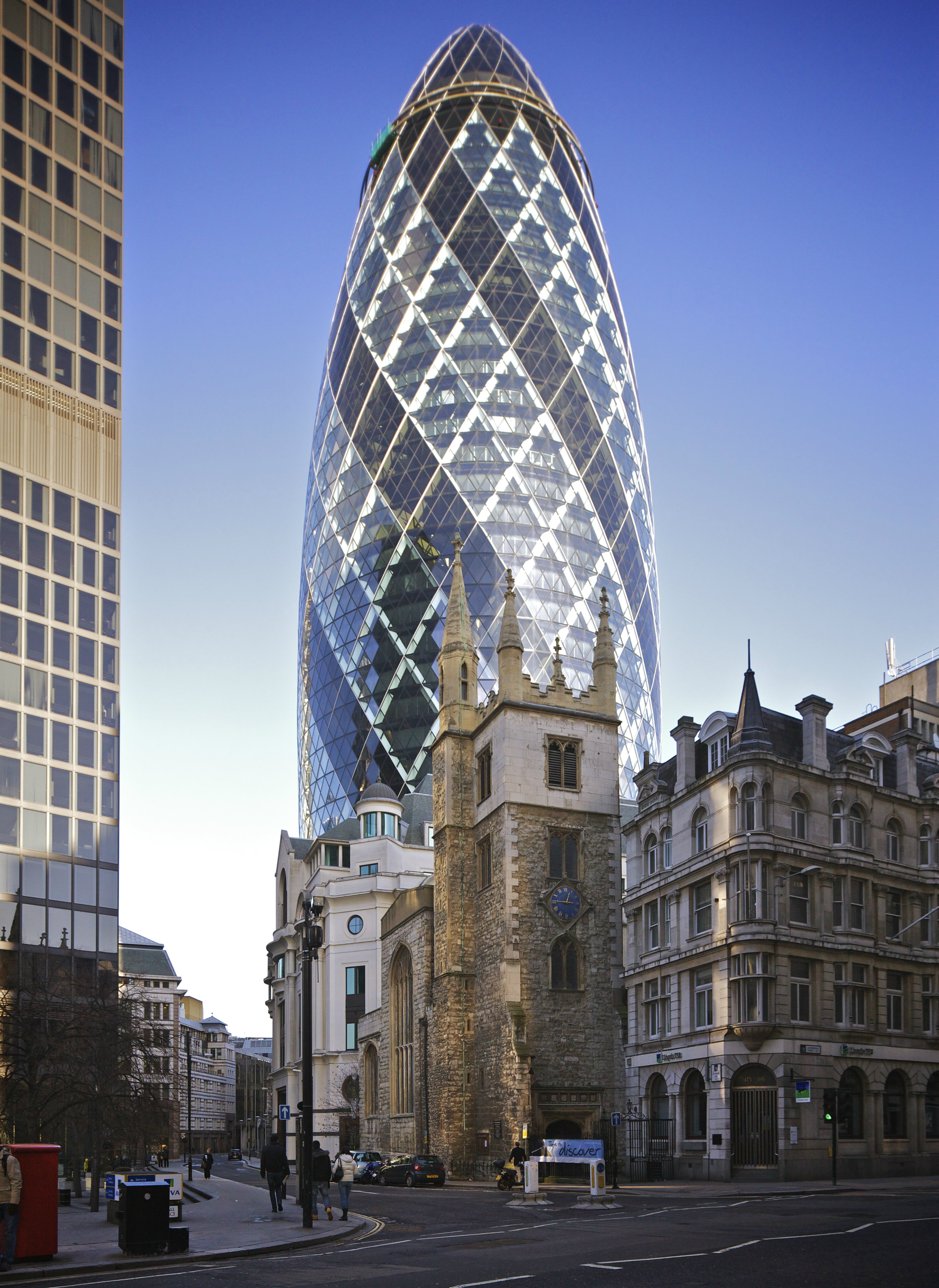Sunday, March 11, 2012
"Gherkin" and how to use a lens
This is the London building popularly known as "The Gherkin". I am sure many people hate it, that's always true of the radically different. But at least you can't say that it does not make an impression! It's only from 2004, but already one of the most famous buildings in London, always used in films etc, like the Eiffel tower is for Paris.
Here's a whole 'nuther thing though, if you look at the full-resolution image on Wiki, you'll notice that at 100% (called "pixel-peeping", because in print you often don't notice the flaws which look so blatant on the screen at 100%), the top of the building looks awful, blurred.
I thought, "that must be a cheap or old digicam". But the high resolution said otherwise, so I got curious and looked further.
And it turns out that it was taken with the 3,000-dollar Canon 5D2, and the 2,000-dollar lens Canon 24mm F:3.5 Tilt-Shift. Good gear! Professional gear.
So why is it so blurry on the main subject? (And why the heavy vignetting, dark corners?) Well, the guy had his camera set at Aperture Priority, and set at full aperture, 3.5. And no lens in the world is at its best at full aperture, not even such an expensive one. Some lenses are good enough at full aperture, but they are always better stopped down a couple of stops. (F:8.0 is usually one of the best settings, re sharpness.)
Further, he or the camera may have focused on the building in the foreground [Update: T/S lenses don't have autofocus, thank Andreas]. Though I'm not sure how big a difference that made at that distance.
Basically, unless you need to isolate your subject with background blur, or you're forced by poor light (not the case here, it was taken at 1/2000 sec), don't use your lens at full aperture if you want optimum sharpness.
Funny thing is that if the photographer had chosen to just let the camera select the settings, at "P", Program, setting instead of Aperture Priority, it would probably have selected something around 8.0 and 1/500th second instead, much more fitting.
Update:
Bert said:
...what really bothers me is how the perspective on the buildings in the foreground is so wrong. The tower in the center and rightmost (hotel-like) building really look like they are repelling each other!
I wonder if this is caused (or at least enhanced) by the extreme setting of the lens? I really don't know anything about those.
This special lens ("tilt and shift") allows the vertical lines of buildings to remain parallel, even though the camera is "looking up". It's important to architectural photographers, but I confess I find it debatable which looks less natural, the enforced parallels, or the converging verticals which we are used to from normal cameras.


